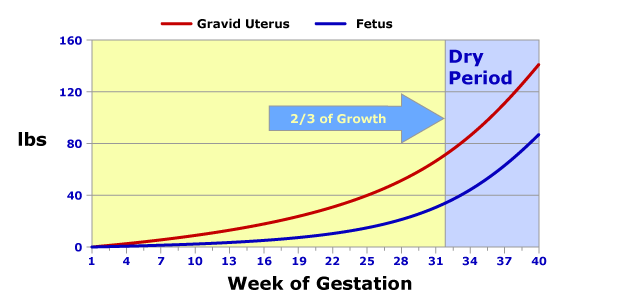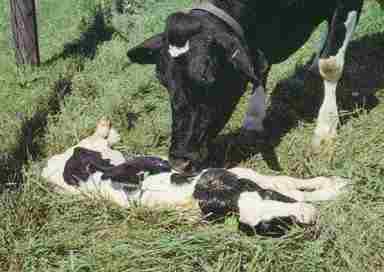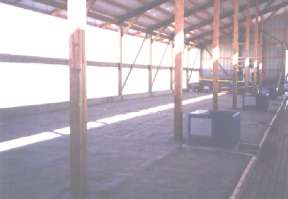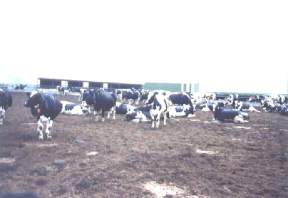Previous Page | Right click this page to print.
Dry Cow Nutrition and Calving Environment
Why is nutrition of the dam important? This graph shows the growth of the gravid uterus which is the fetus, the fetal fluids, the placenta over 40 weeks of gestation and also the growth of the fetus.

You will notice for about the first half of gestation, very little growth occurs. The majority of the growth, or two-thirds of the growth, occurs during the last 8 weeks of gestation. You can see that the fetus puts on or gains about over 40 lbs and the gravid uterus somewhere around 50 lbs.
Poor dry cow nutrition results in low birth weights and higher morbidity and mortality at calving. So the dam must be fed adequately. Many times we have improper dry cow nutrition because these animals are in a non-productive state. They are not making the dairy any money, actually costing in feed about $1.25-$1.50 per day. And so sometimes we find unbalanced rations in these groups of cows. The result again is low birth weight, morbidity or lack of vigor and slow growth or animals that we characterize as poor-doers.
Secondly, the calving environment can have an effect on the growth of the calf, simply due to exposure to microorganisms.
This is a picture of the ideal calving environment, a nice, lush, dry, grassy paddock.

But we know in circumstances this is not possible.
In confined housing, this would be a picture of an ideal environment.

So this is a group housing situation with rubber mats, relatively clean, it looks sanitary. As cows calve, they are pulled out, calves are separated from the dams.
Then, this would be a calving environment that we would want to try to avoid.

Cows are loose-housed, appears to be adequate room for each animal. But you notice that the environment that the calf is first going to be exposed to...wet conditions, mud, fecal material, etc…
Previous Page | Right click this page to print.